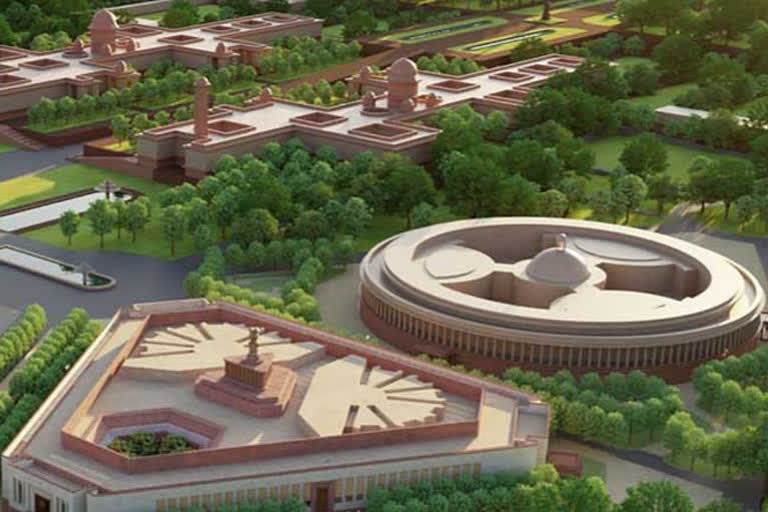Hyderabad: Indian Parliament is a legislative forum that deals with the fortune of 17.7 percent of the World’s population. The Parliament building constructed during the British era way back in 1927, has been a witness to numerous historic events since the past nine decades. It stands erect as a heritage structure of democracy. While preserving the sanctity of the structure, the Modi Sarkar has resolved to build a new Parliament building by the 75th anniversary of India’s Independence Day. The building is planned to be a blend of ancient traditions and modern aspirations. While making an appeal to the Central government to take up construction of a new Parliament building, the presiding officers of the two houses of Parliament had stated that though additions were made to the present building in 1975, 2002 and 2017, deficiencies remain striking and the present technology is not adequate for conducting sessions.
The people of the nation were witness to the difficulties faced in holding the monsoon sessions in these Covid-19 times, which called for observing social distancing. The shortage of space for conducting the session was evident to the entire nation.
In this backdrop, the Prime Minister Mr Narendra Modi laid the foundation stone for the construction of a new Parliament building on December 10, 2020, as part of the Union government’s Central Vista Modernization project. The Supreme Court had initially directed the government to execute the project only on the basis of its final verdict on the issue. However, the bench subsequently gave a majority verdict striking down objections to the project. It is a matter of pride for the entire people of the country that the construction of a grand structure, designed to meet the requirements of the next 100 years, is going to be realized by next year. Considering the sanctity accorded to the triangle by different religions, the new Parliament building has been modelled in a triangular shape. The Lok Sabha, Rajya Sabha and Constitution hall will reflect the national symbols Peacock, Lotus and Banana Tree. This is a milestone towards achieving the objective of Sreshta Bharat.
India is the World’s largest democracy. In terms of Gross Domestic Product, it is ranked sixth in the World. According to the revised estimates, this year’s Central budget is going to be to the tune of Rs 27 lakh crore. When our economy is so huge, where is the need to find fault if a new Parliament building is constructed at a cost of Rs 1000 crore?
Bharat Ratna Pranab Mukherjee had suggested that being a country with a population of 130 crores, India should have at least 1000 members of Parliament. As the number of MPs is going to be fixed by the year 2026, the Center has planned a Lok Sabha having a seating capacity to accommodate 888 members. Rajya Sabha is planned to have a seating capacity of 384 members. It has to be re-evaluated whether this seating capacity will meet the requirements of the coming 100 years.
The nation is divided into five zones in terms of Earth Quake risks. Central Vista is being built in the fourth zone, a high-risk region. Crucial structures like Rashtrapati Bhavan, Parliament, offices and official residences of vice-president, Prime Minister, central government offices, Supreme Court and lower courts, MP quarters, offices and official residences of three armed forces and several others are located in the same district having an extent of 26 sq kms. The grand structures, planned to be built with a capacity to withstand severe earthquakes, will showcase India’s never-ending glory. As tokens of India’s self-reliance the structures to be built will inspire speedier and liberal progress of the country!



